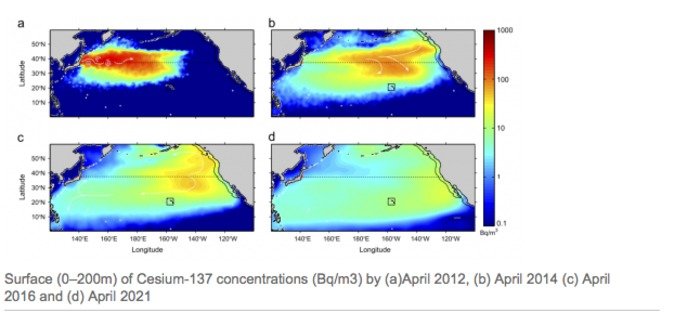CANBERRA, Australia, Aug. 28 (UPI) -- The radioactive plume from the 2011 Fukushima nuclear disaster will reach U.S. shores within 3 years of the date of the incident, Australian researchers say.
Atmospheric radiation was detected on the U.S. West Coast within days of the incident, but radioactive particles in the ocean plume take considerably longer to travel the same distance.















